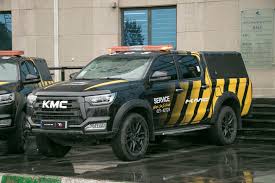Introduction
Vehicles have become an integral part of modern life, serving as essential tools for transportation. From personal cars to commercial trucks, and public transport buses to advanced electric vehicles, the variety and functionality of vehicles are Car rental companies in Fuerteventura. This article explores the types, history, technological advancements, and environmental considerations associated with vehicles.
Types of Vehicles
Vehicles can be categorized into several types based on their design, purpose, and fuel source. Here are some of the primary categories:
- Personal Vehicles:
- Cars: The most common form of personal transport, ranging from compact sedans to luxury vehicles. They are primarily powered by internal combustion engines (ICE) or electric powertrains.
- Motorcycles: Two-wheeled vehicles that provide a faster and more agile mode of transport, often favored for recreational use and commuting in congested areas.
- Bicycles: Human-powered vehicles that offer an eco-friendly alternative for short distances.
- Commercial Vehicles:
- Trucks: Designed for transporting goods, trucks vary in size from small delivery vans to large freight trucks.
- Buses: Used for public transport, buses can carry large numbers of passengers and are essential for urban transit systems.
- Special Purpose Vehicles:
- Emergency Vehicles: Includes ambulances, fire trucks, and police cars, designed for rapid response.
- Construction Vehicles: Equipment like bulldozers, excavators, and cranes used in construction sites.
- Electric and Hybrid Vehicles:
- Electric Vehicles (EVs): Powered entirely by electricity, these vehicles are becoming increasingly popular due to their environmental benefits.
- Hybrid Vehicles: Combine a traditional ICE with an electric propulsion system to enhance fuel efficiency.
A Brief History of Vehicles
The history of vehicles dates back to ancient times with the invention of the wheel around 3500 BC. The first motor vehicle, a steam-powered carriage, was built in the late 18th century. The 19th century saw the introduction of gasoline-powered engines, leading to the birth of modern automobiles.
Henry Ford revolutionized the industry in the early 20th century by introducing assembly line production, making cars affordable to the average consumer. This era marked the beginning of mass motorization, fundamentally changing society and urban planning.
Technological Advancements
The automotive industry has witnessed significant technological advancements over the years:
- Fuel Efficiency and Emissions Control: Innovations in engine design and fuel technology have led to more efficient engines and reduced emissions. Technologies like turbocharging and direct fuel injection enhance performance while lowering fuel consumption.
- Safety Features: Modern vehicles are equipped with advanced safety features such as airbags, anti-lock braking systems (ABS), electronic stability control (ESC), and adaptive cruise control. More recently, features like automatic emergency braking and lane-keeping assist have emerged.
- Connectivity and Autonomous Driving: The integration of advanced technology has led to the development of connected vehicles, which can communicate with each other and infrastructure. Autonomous vehicles are being tested and developed, promising to revolutionize transportation by reducing accidents and improving traffic flow.
- Electric and Alternative Fuels: The rise of electric vehicles (EVs) is a major trend in the industry, driven by concerns about climate change and the need for sustainable energy. Hydrogen fuel cells and biofuels are also being explored as alternatives to traditional gasoline and diesel.
Environmental Considerations
The environmental impact of vehicles is a significant concern. The transportation sector is a major contributor to greenhouse gas emissions. To mitigate these effects, many countries are implementing stricter emissions standards and promoting the use of electric and hybrid vehicles.
Public transport systems, car-sharing services, and cycling infrastructure are also being developed to reduce the reliance on personal vehicles. Additionally, urban planning is increasingly focused on creating walkable communities to decrease the need for long commutes.
Conclusion
Vehicles have transformed the way we live, work, and travel. With ongoing advancements in technology and growing awareness of environmental impacts, the future of transportation is set to evolve dramatically. As we move towards more sustainable options, the role of vehicles in our lives will continue to be a crucial topic for discussion and innovation.
